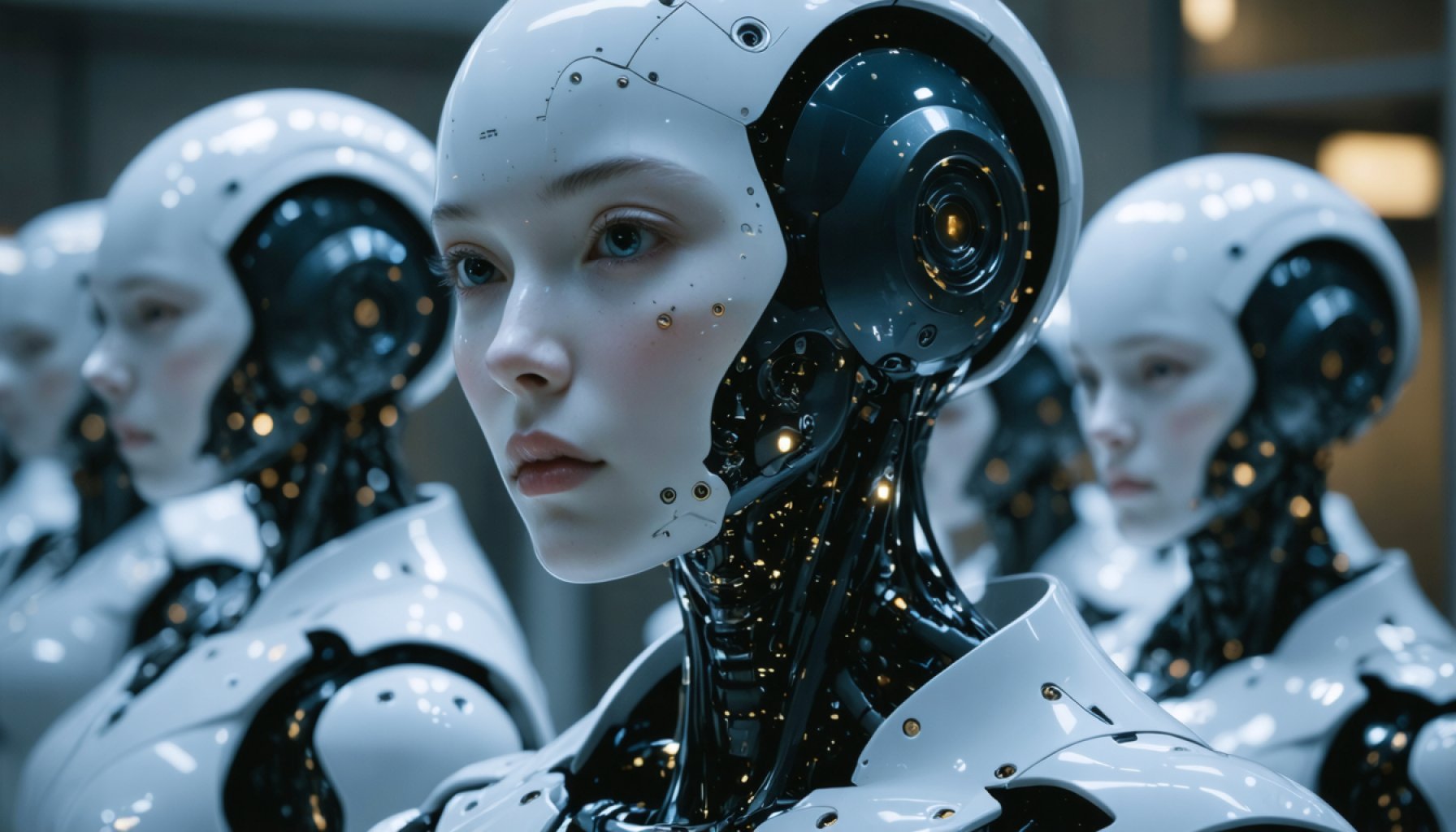- Clone Robotics introduces the Protoclone, a humanoid robot with over 200 degrees of freedom, 1,000 Myofibers, and 200+ sensors, blurring lines between art and engineering.
- Protoclone serves as a precursor to Clone Alpha, suggesting future integration with Artificial General Intelligence (AGI).
- The robot’s potential for independent learning poses questions on its integration into society and interaction with humans.
- The concept of the “uncanny valley” arises, questioning if the robot’s lifelike appearance will be accepted or cause discomfort.
- Pre-orders for Protoclone are expected to begin later this year, prompting discussions on its role in human lives and technology’s ethical boundaries.
- The Protoclone exemplifies technological ambition while igniting debates on the intersection of humanity and machines.
In a world where science fiction flirts with reality, Clone Robotics has taken a bold step into the uncanny valley with its latest creation, the Protoclone. This faceless wonder is no ordinary humanoid robot—it boasts an impressive engineering feat with over 200 degrees of freedom, powered by more than 1,000 Myofibers, and guided by a complex web of 200 plus sensors. The Protoclone teeters between art and engineering, capturing the eerie beauty of an anatomically accurate synthetic human.
But what truly sets Protoclone apart is its potential for evolution. Its creation is a prelude to something greater: the Clone Alpha. Unlike other androids, the Protoclone serves as a precursor, its creators hinting at the possibility of endowing it with true Artificial General Intelligence (AGI). Imagine a world where these machines not only mimic human motion with unparalleled precision but also learn independently, sculpting their destinies alongside humanity.
With pre-orders slated to begin later this year, the questions multiply. How will these human-shaped marvels integrate into our daily lives? Can they smoothly navigate the intricate dance of human interaction, or will their lifelike precision ultimately repulse us, hearkening back to long-held concerns about the “uncanny valley”?
As technology races forward, the Protoclone stands as a testament to human ambition and perhaps, an impending debate on where to draw the line between man and machine. Will Protoclone charm us with its capabilities or unsettle us with its unfamiliar familiarity? The future might hold the answer soon enough.
Revolutionary Robotics: How Protoclone is Shaping a New Era in Humanoid Robots
Features, Specs & Pricing
Protoclone Overview:
The Protoclone, designed by Clone Robotics, represents a significant advancement in humanoid robotics. With over 200 degrees of freedom, more than 1,000 Myofibers, and in excess of 200 sensors, it promises unparalleled mimicry of human motion. This complexity enables the Protoclone to perform a broad range of movements with fluid precision.
Key Features:
– Degrees of Freedom: 200+ for intricate movements akin to human flexibility.
– Sensors: Over 200 dispersed throughout the body for sensory feedback and interaction.
– Myofiber Technology: 1,000+ Myofibers simulate human muscle movement and strength.
Pricing details haven’t been fully disclosed, but potential buyers can anticipate a premium price point reflective of its cutting-edge technology.
Real-World Use Cases
Protoclone’s potential applications span various fields:
1. Healthcare: As a robotic assistant for performing repetitive tasks like patient lifting or carrying supplies.
2. Education: Aiding in STEM education by demonstrating complex engineering principles.
3. Entertainment: Acting as realistic characters in theme parks or interactive installations.
4. Research: Serving as a testbed for developing and refining human-robot interaction protocols.
Market Forecasts & Industry Trends
The humanoid robotics market is poised for growth with the integration of AI and robotics in sectors like healthcare, manufacturing, and personal assistance. A report by Grand View Research projects the global robotics market size will reach $43.3 billion by 2027, driven by advancements in AI and robotics like those in Protoclone.
Controversies & Limitations
Uncanny Valley: The eerie resemblance of Protoclone to humans might trigger discomfort among users, a psychological concept known as the “uncanny valley.”
Ethical Concerns: The potential integration of AGI raises questions about autonomy, consent, and the societal impact of machines capable of independent thought.
Technical Challenges: Ensuring smooth, lifelike movement and decision-making capabilities presents significant challenges in terms of computational power and software reliability.
Security & Sustainability
Security: As with any advanced technology connected to AI, Protoclone necessitates robust cybersecurity measures to prevent unauthorized access or hacking.
Sustainability: The development process emphasizes material efficiency and energy-efficient designs to reduce the ecological footprint of robotics manufacturing.
Pros & Cons Overview
Pros:
– Advanced mimicry of human motion through sophisticated engineering.
– Potential to revolutionize industries with labor-intensive tasks.
– Innovative platform for exploring human-robot interactions.
Cons:
– High cost may limit accessibility to certain sectors.
– Potential to exacerbate issues related to the “uncanny valley.”
– Ethical and security challenges in integrating AGI.
Insights & Predictions
With technology rapidly advancing, humanoid robots like Protoclone may become commonplace within the next decade, integrated into various aspects of daily life. As companies continue to fine-tune AI capabilities and improve autonomous functions, we could witness significant shifts in workforce dynamics and human-machine relationships.
Actionable Recommendations
1. Stay Informed: Follow industry publications and research papers on advancements in robotics and AI.
2. Embrace Automation: For businesses and educators, consider how humanoid robots could enhance productivity and learning.
3. Engage in Dialogues: Participate in discussions about the ethical implications of humanoid robots and seek to influence responsible development policies.
For more on the future of robotics and AI, visit Clone Robotics.











